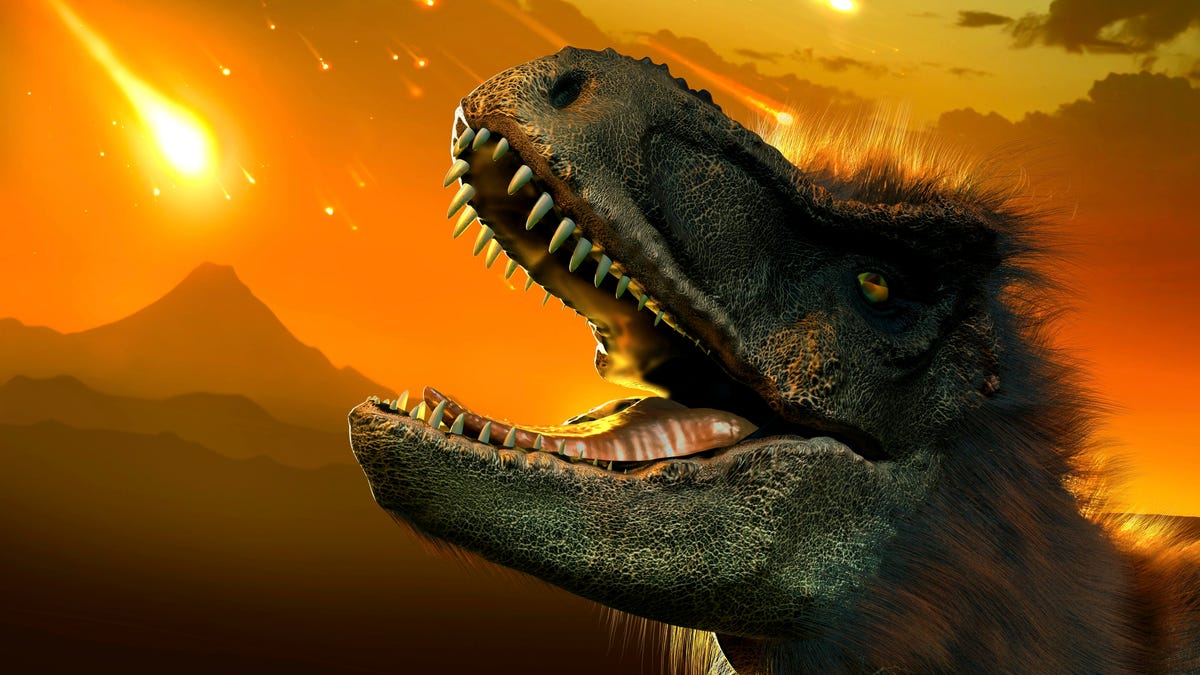Around 66 million years ago, the dinosaurs were killed by an enormous asteroid that hit what is today Chicxulub, Mexico. But a second asteroid struck during that same era at the Nadir crater off the coast of Guinea in western Africa — proving once and for all that nature really had it in for the poor dinos.
A study published in Nature shows off the Nadir crater in ways science had not previously seen it. Led by Uisdean Nicholson, a geologist at Heriot-Watt University in Scotland, scientists used 3D seismic data to measure the impact and were able to reverse engineer the size of the asteroid, its angle of impact, how fast it was going and the impact it had on the seabed and underlying rock.
The asteroid was likely 450 to 500 meters in size, traveling at 20 kilometers per second and hit the Earth at a 20- to 40-degree angle from the northeast, the study says.
“There are around 20 confirmed marine craters worldwide, and none of them has been captured in anything close to this level of detail. It’s exquisite,” Nicholson told Phys.org. “Craters on the surface are usually heavily eroded and we can only see what is exposed, whereas craters on other planetary bodies usually only show the surface expression. These data allow us to image this fully in three dimensions and peel back the layers of sedimentary rock to look at the crater at all levels.”
Among other things, the study proved that the crater was, in fact, the result of an asteroid impact and that it took place around the same time as the asteroid that killed the dinosaurs, which was 66 million years ago at the end of the Cretaceous period. So, while the Chicxulub asteroid was the one that killed the dinosaurs, it seems it may have had a little help from the asteroid that hit the Nadir crater.
The anatomy of an asteroid impact
The asteroid would’ve hit with incredible violence, displacing water in the area for up to a minute.
Perhaps more frightening is the blow-by-blow result of the impact, which scientists were also able to reconstruct. According to the study, the asteroid would have displaced all of the water in the area, which was around 800 meters deep at that time, shooting a massive “train of tsunamis” into the Atlantic Ocean.
Sediment would’ve rushed in to fill the new hole made by the impact, causing a brim to form. Some of the sediment would have been vaporized during impact. The tsunamis were measured to have impacted the seafloor upwards of 20 kilometers away.
From there, a massive earthquake would have caused damage below the seabed, up to and including the liquefaction of the underlying rock across the entire area near the crater. The train of tsunamis would eventually reverse and come back as water filled the area once again.
In addition to all of that, scientists say that the impact would have caused ionospheric disturbances and thermal radiation. Massive landslides would’ve occurred as parts of the seafloor plateau crashed further into the ocean.
Fortunately for humans, these types of impacts are exceedingly rare. The largest meteor impact in living memory is the “super bolide” asteroid that exploded over Russia in 2013. There is a very small chance that Bennu, a similarly sized asteroid, could hit Earth sometime around the year 2300. The odds of that happening are about one in 1,750.
